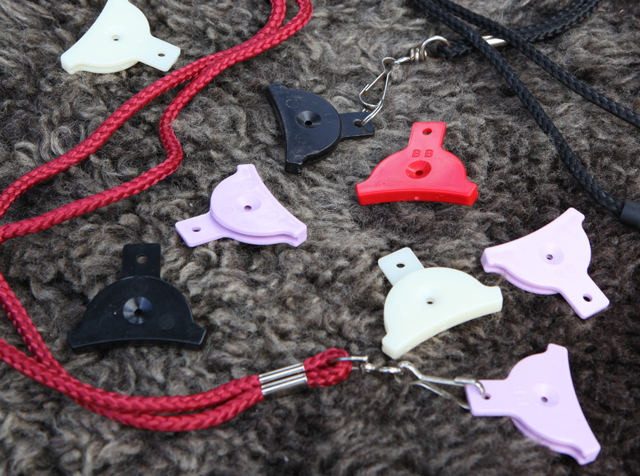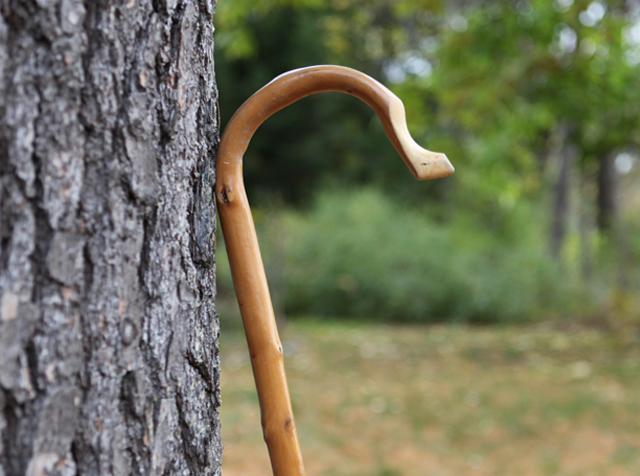Training tips
Some Useful Commands: always use name first, then voice/whistle command.
Say the command only once. Do not get in the habit of repeating. Whistle commands below in italics.
- “Come” – hi low hi
- “No”
- “Right here” – (directly to you)
- “Down” – long low blast
- “There/Stand” – short low blast
- “Out” – low hi low
- “Stay vs. okay”
- “Heel”
- “Up” (pronounced Hup) – short hi blast
- “That’ll Do” (done working) – repeat quickly three times low hi dropping off slowly
- “Steady or Easy”
- “Gently” – (when taking food)
- “Over” (flip over on back)
- “Bring it here” (optional)
- “Sit” (optional)
- “Where’s the (ball, frisbee, etc.)” – (rope,door,latch)
- “Pull” – (the ball,rope,later sheep grip)
- “Drop it” – short blast hi
- “Get in the (truck, car, pen, etc.)”
- “Come by” (by) – clockwise (low hi-come by)
- “Way to me” (way) – counter clockwise (hi low)
- “Walk in” (walk) – too short low
- “Look back” – hi lower highest
- “Hold ’em”
- “Bring ’em here”
- “Shed” (come between sheep) – 3 short hi
- “Schist” (grip animal gently)
- “Get ’em” (grip sheep hard)
- Be consistent with commands. All members of the family/staff should use the same commands.
- Gain trust and love for the first two weeks. No negative commands.
- Short sessions on leash and collar. End on positive note.
- Get collar with name and phone number on it. (No dangling tags)
- Teach early about cars. Constantly challenge dog’s interest. Do not underestimate the dog’s intelligence. Expose to many people, situations, etc.
- Do not take to Obedience School. It tends to diminish its natural instincts.
- Socialize with other dogs.
- Inside vs. outside pet.
- Establish early on the time to play vs. work. Then “That’ll
do!“. - Get checked out by your local veterinarian. Get into his/her
program. - Join NEBCA for tapes, videos, and support.
- Watch for first instinct to work.
- Watch puppy’s environment: poisons, cars, and animals.
- Fleas, worms – worming should be done at 4,6,8,12 and 16 weeks,
6 months. - Food – lots of it, as well as fresh water.
- First two months set the tone for the rest of dog’s life, establish future patterns. Get in your puppy’s mind, use his language.
- Visualize your commands.
- You must be Alpha, as well as rest of family/staff. Teach submission.
- The puppy must be taught to fit into your environment right from 10 weeks on.
- Teach the puppy that you control food.
- Make the puppy wait before doing something, e.g., going into house, barn, and car.
- Leave the pup alone for increasingly long times, build up his
confidence in your return. (“I’ll be back”). - No barking.
- Set the tone for how pup lives with other pets. Keep pecking order balanced with praise of older dog as well as the younger.
- Children must respect the dog. Do not tease.
- Develop dog balance.
- Do not work too close.
- Do not use hand signals.
- Have basic commands down before introducing to stock. Use calm stock in controlled environment at first.
- Do not repeat commands. Be firm and achieve exactly what you ask.
- Natural dog vs. made dog – do not over command your dog, let instinct through.
- Balance the Positive with the Negative. Do not over reward or discipline your dog.
Training tools


We sell a multitone whistle that is great for working with dogs and even other pets. The advantage to these whistles over others is that the ability to create many different tones is helpful in developing numerous different commands. The whistles come in a variety of colors and are made of a hard plastic so they won’t freeze to your mouth in those cold months of the year. They are also available with or without a lanyard (breakaway chain or breakaway cord). We usually sell the whistles at our dog demos but you may also purchase one by contacting us directly.
Also for your convenience, we have created some instructions on how to use the whistle. Many people find it difficult to use, but with some practice and these simple steps, you’ll be a pro in no time!
Did you buy one of those nice little dog whistles from us and still can’t figure out how to get it to make noise? Well, here are some instructions that may help, but remember the most important rule: Don’t give up, keep practicing!
We also have very nice shepherd’s crooks for sale. They are made from Sweet Chestnut and are available in 54,” 60,” and 66″ heights. Be sure not to leave them in a place where they will get wet for they will slowly loose their “hook” shape. If your crook does happen to “uncurl,” here is a way of remolding it: Get the crook wet, perhaps even soak it for a while until it is easily bendable. Then bend the crook back to the shape you desire and secure it with a strong bungie cord wrapped several times around. Then, let the crook dry in this position. It’s possible that you may have to repeat this process again.
As with the whistles, we sell the crooks at most of our demonstrations but they can also be purchased directly by contacting us.
Books, literature, and videos on Border Collies
Herding Dogs – Vergil S. Holland
Lessons From a Stock Dog – Bruce Fogt
The Working Border Collie
The National Stock Dog Magazine
The American Border Collie Magazine
The NEBCA Newsletter
The Northeastern Sheepdog Newsletter
A Year in the Life of the Working Sheepdog
Download Our Whistle Instructions
We have created some helpful whistle instructions for you.
